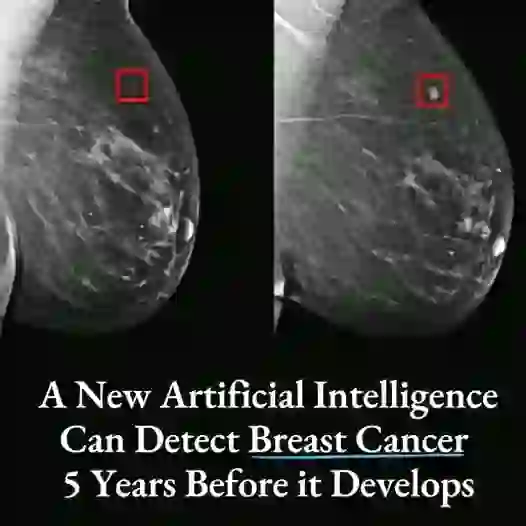
AI and Mammography

Traditional mammography, though widely used, has limitations in accuracy. AI is changing this. Recent studies show that AI tools, such as the INSIGHT MMG model, can analyze mammograms and detect patterns linked to future cancer development. Remarkably, these tools are effective even when no visible signs of cancer are present.
“AI can now analyze scans faster and with greater accuracy, helping doctors catch cancer earlier,” said Ryan Schoenfeld, CEO of the Mark Foundation for Cancer Research.
Promising Results

A landmark study in Norway evaluated mammograms from over 116,000 women using the INSIGHT MMG model. This AI tool wasn’t originally designed to estimate future cancer risk but showed predictive accuracy for cancers developing up to six years later.
Researchers found that AI scores were consistently higher in breasts where cancer eventually developed. The study demonstrated a strong correlation between AI-predicted scores and the likelihood of future breast cancer, significantly improving early detection.
Outperforming Traditional Screening

Unlike traditional methods, AI tools analyze vast datasets and highlight subtle anomalies missed by human radiologists. In Germany, the use of AI in a national screening program improved detection rates by 17.6% without increasing false positives. “We could improve the detection rate without increasing harm for women taking part in breast cancer screening,” said Prof. Alexander Katalinic of the University of Lübeck.
The AI system’s ability to label scans as “normal” or issue safety-net alerts has been a key feature in enhancing diagnostic precision.
Predictive Medicine

AI’s potential extends into predictive medicine, allowing doctors to anticipate which patients are most at risk of developing cancer. Hypothesis-driven AI, developed at institutions like the Mayo Clinic, sifts through complex healthcare data to refine diagnostics and predict patient outcomes. These tools have been especially successful in identifying subtle abnormalities and predicting responses to treatments.
Biopsies Enhanced by AI

AI is also advancing non-invasive diagnostic methods like liquid biopsies, which detect tumor DNA in blood samples. At Weill Cornell Medicine, AI-powered techniques identified cancer recurrence months or even years earlier than traditional methods. This breakthrough offers new hope for monitoring cancers like breast, lung, and colorectal.
Challenges in AI Integration

While AI holds enormous promise, challenges remain. Ethical concerns about bias in training data and the “black box” nature of AI models pose obstacles to widespread adoption. Additionally, regulatory frameworks are struggling to keep pace with rapid technological advancements. Dr. Katharine Halliday of the Royal College of Radiologists emphasized the importance of careful deployment with expert oversight.
The Path to Personalized Cancer Care

AI’s ability to analyze genetic and clinical data is paving the way for precision oncology. New AI-driven approaches, such as adaptive therapy schedules and personalized cancer vaccines, are already showing promise. Evaxion Biotech’s AI-designed vaccine, for example, demonstrated a 69% response rate in melanoma patients, marking a significant step forward in individualized treatment.
A New Era of Cancer Detection

Artificial intelligence is reshaping how we detect, diagnose, and treat breast cancer. By identifying cancer years before symptoms appear, AI offers a chance to save lives through early intervention. “The potential of AI in oncology is not just exciting—it’s revolutionary,” said Ghazenfer Mansoor, CEO of Technology Rivers.
While challenges remain, the integration of AI into cancer care marks a critical leap forward, offering hope for millions affected by breast cancer worldwide.

